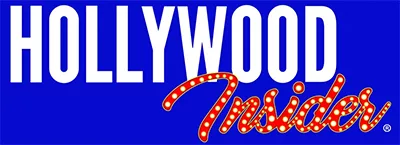Table of Contents
Many a True Word Has Been Screamed in Jest
Over 800,000 people have laughed at the viral YouTube parody Leaked Wes Anderson Meltdown on Set, where a faux version of the famously composed director rants on the other end of the phoneline: “If it’s not going to be symmetrical, it’s not going in the f***ing movie!”
The clip is completely manufactured- but, like all satire, funny because it’s true. Wes Anderson’s signature symmetry has become more than a visual preference; it’s an artistic law in his filmography.
As the saying goes, “Many a true word is spoken in jest.” The meltdown video is satire, yes- but it also speaks to a deeper artistic tension. What happens when a filmmaker becomes a brand? When style starts to dictate substance?
That’s what makes the video so funny. It taps into the unspoken truth of Wes Anderson’s creative identity: his work is so precisely defined, so meticulously composed, that it has become almost formulaic. The director, hailed as a true American auteur, seems to be trapped in his own personal playground.
Things to do:
- Subscribe to The Hollywood Insider’s YouTube Channel, by clicking here.
- Limited Time Offer – FREE Subscription to The Hollywood Insider
- Click here to read more on The Hollywood Insider’s vision, values and mission statement here – Media has the responsibility to better our world – The Hollywood Insider fully focuses on substance and meaningful entertainment, against gossip and scandal, by combining entertainment, education, and philanthropy.
The Auteur Blueprint
Auteur theory, developed by French film critics like François Truffaut in the 1950s and popularized in the U.S. by Andrew Sarris, was originally a tool of analysis- not instruction. It argued that directors like Alfred Hitchcock or Howard Hawks left distinct, recognizable marks on their films, akin to an author’s voice in literature.
But when applied dogmatically- especially by budding filmmakers– it becomes a trap. If a director believes they must adopt an absolute style from their very first film, they risk being bound to that identity forever. Wes Anderson is a prime example. His symmetrical compositions, pastel color palettes, and whimsical tone now define his brand. While that consistency has brought him acclaim, it may also be limiting him.
WATCH THE TRAILER of the Film and the Revolution: ‘Can I Go Home Now?’
The Children Around the World Continue to Ask the question
Chained to the frame
Anderson’s upcoming film, ‘The Phoenician Scheme,’ appears to offer more of the same- visually striking but emotionally distant. The trailer is loaded with the Anderson trademarks: centered subjects, deadpan delivery, and fastidiously arranged backdrops. It’s all beautifully done. And yet, there’s a growing sense that the director is simply retreading old ground.
This isn’t a new critique. David Denby of The New Yorker has noted that “[Anderson’s] style has become a self-inflicted wound, a limitation that he has embraced with open arms.” Stephanie Zacharek (Time) has- during her time at The Village Voice– likened his films to “dollhouses,” where characters are arranged rather than developed. Russ Josephs of Fanfarebelieves that “if [Anderson] wants to recapture what’s so perfect about [his past films], it’s imperative that he does one thing: stop being so damn Wes Anderson.”
Anderson’s dedication to form isn’t just about control- it’s about identity. His style has become so defining that deviation would seem like betrayal, both to his audience and to his own artistic ethos.
Related article: Want GUARANTEED SUCCESS? Remove these ten words from your vocabulary| Transform your life INSTANTLY
Related article: Streaming Services Are Killing Movie Theaters
From Bottle Rocket to Blueprint
Ironically, Anderson didn’t begin his career this way. ‘Bottle Rocket’ and ‘Rushmore’- while stylistically distinct- still allowed room for emotional looseness and narrative risk. Over time, however, his films became more curated, more mannered, and more about the way they looked than what they said.
This is the paradox of success under auteur theory. Once a director becomes known for a specific vision, audiences and critics alike begin to expect it. The style becomes the selling point, not the story. And if a filmmaker strays too far from that visual identity, they risk alienating the very people who elevated them. In Anderson’s case, his visual sensibility is no longer just a choice- it’s a contract.
Related article: EVOLUTION: Every Ryan Gosling Role From 1995 to 2020, All Performances Exceptionally Poignant
Related article: EVOLUTION: Every Henry Cavill Role From 2001 to 2021, All Performances Exceptionally Poignant
Related article: All Best Actor/Actress Speeches From The Beginning Of Oscars 1929-2019 | Hollywood Insider
Beauty and the Bind
There’s no question that Anderson remains one of the most distinctive voices in modern Cinema. His ability to create fully immersive, highly specific worlds is unmatched. But the question now is whether he can grow beyond them. Or, more provocatively- does he even want to?
In any artform, an artist spends a lifetime refining a style so unique that it becomes instantly recognizable. In Cinema, the pinnacle of this achievement is when someone is flipping through channels and can immediately identify a director by the way they construct images and montages. But what happens once that style is perfected? Anderson’s distinctive visual and narrative style has become synonymous with his name, and with good reason- he has mastered his craft. His meticulous use of symmetry, color palettes, and quirky characters has set him and his films apart.
So, who’s to tell him to stop? Anderson’s style is not just a signature; it’s the heart of his storytelling. It has earned him widespread acclaim, culminating in an Academy Award for Best Live Action Short at the 2024 Academy Awards for his adaptation of ‘The Wonderful Story of Henry Sugar.’ In a world where artistic evolution is often celebrated, Anderson’s steadfast commitment to his style is a testament to the idea that perfection is not about change, but about honing one’s craft until it resonates universally. His success in and of itself may be an argument that in art, perfection doesn’t mean moving on, but rather digging deeper into what you’ve mastered.
Can Wes Anderson Move Beyond His Signature?
Can an artist like Wes Anderson continue to grow in their art when their identity is so intrinsically tied to their signature style?
Picasso said that “[God] invented the giraffe, the elephant and the cat. He has no real style, He just goes on trying other things.” Perhaps the true evolution of an auteur lies not in a constant pursuit of novelty, but in the courage to move beyond the constraints of perfection and allow room for vulnerability, emotional depth, and narrative risk.
Whether Anderson chooses to challenge his own artistic boundaries or continue refining his perfect world, the choice remains his- but the possibility for growth will only come from stepping outside the gilded cage of his own making.
Related article: Understanding the Star Wars Timeline
Related article: A Tribute to Francis Ford Coppola: One of Cinema’s Unforgettable Directors | ‘Megalopolis’, ‘The Godfather’ & More
Related article: #metoo Revolution: Powerful Questions That Need Answers
Related article: FACT-CHECKED Series: Timothee Chalamet and 32 Facts about The Young Superstar
By Joseph Tralongo
Click here to read The Hollywood Insider’s CEO Pritan Ambroase’s love letter to Cinema, TV and Media. An excerpt from the love letter: The Hollywood Insider’s CEO/editor-in-chief Pritan Ambroase affirms, “We have the space and time for all your stories, no matter who/what/where you are. Media/Cinema/TV have a responsibility to better the world and The Hollywood Insider will continue to do so. Talent, diversity and authenticity matter in Cinema/TV, media and storytelling. In fact, I reckon that we should announce “talent-diversity-authenticity-storytelling-Cinema-Oscars-Academy-Awards” as synonyms of each other. We show respect to talent and stories regardless of their skin color, race, gender, sexuality, religion, nationality, etc., thus allowing authenticity into this system just by something as simple as accepting and showing respect to the human species’ factual diversity. We become greater just by respecting and appreciating talent in all its shapes, sizes, and forms. Award winners, which includes nominees, must be chosen on the greatness of their talent ALONE.
I am sure I am speaking for a multitude of Cinema lovers all over the world when I speak of the following sentiments that this medium of art has blessed me with. Cinema taught me about our world, at times in English and at times through the beautiful one-inch bar of subtitles. I learned from the stories in the global movies that we are all alike across all borders. Remember that one of the best symbols of many great civilizations and their prosperity has been the art they have left behind. This art can be in the form of paintings, sculptures, architecture, writings, inventions, etc. For our modern society, Cinema happens to be one of them. Cinema is more than just a form of entertainment, it is an integral part of society. I love the world uniting, be it for Cinema, TV, media, art, fashion, sport, etc.
More Interesting Stories From The Hollywood Insider
– Want GUARANTEED SUCCESS? Remove these ten words from your vocabulary| Transform your life INSTANTLY
– A Tribute to Martin Scorsese: A Complete Analysis of the Life and Career of the Man Who Lives and Breathes Cinema
– Do you know the hidden messages in ‘Call Me By Your Name’? Find out behind the scenes facts in the full commentary and In-depth analysis of the cinematic masterpiece
– A Tribute To The Academy Awards: All Best Actor/Actress Speeches From The Beginning Of Oscars 1929-2019 | From Rami Malek, Leonardo DiCaprio To Denzel Washington, Halle Berry & Beyond | From Olivia Colman, Meryl Streep To Bette Davis & Beyond.
– In the 32nd Year Of His Career, Keanu Reeves’ Face Continues To Reign After Launching Movies Earning Over $4.3 Billion In Total – “John Wick”, “Toy Story 4”, “Matrix”, And Many More

Joseph Tralongo is a playwright and screenwriter who approaches storytelling with a deep respect for film’s ability to distill human behavior into meaningful moments. His personal work- i.e. his plays, screenplays, and films- leans into semantic tension, moral ambiguity, and the quiet unraveling of social dynamics- not to preach, but to parse. For him, writing is a slow excavation of truth through craft. With a background in theatre and independent film, he brings a structural precision and dramatic instinct to every film he reviews. Hollywood Insider’s mission to champion substance over spectacle aligns with Joseph’s belief that storytelling should investigate, not dictate.








